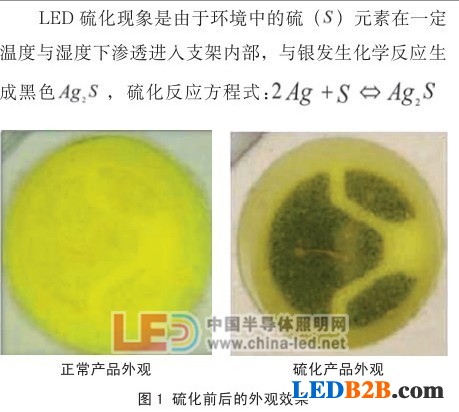When it comes to LED failure, people first think of the dead light that appears under normal current drive, or just emits faint light. In fact, this is the most serious type of failure, called disaster failure. Conversely, if the LED product is in normal use, some key parameter characteristics deviate from acceptable limits, such as permanent light output attenuation, color temperature drift, color rendering index drop, etc., which we call parameter failure.
Considering the bare chip (ie, the epitaxial grain) alone, the probability of failure of the LED product parameter is very low, because it belongs to a very stable solid compound, which is used under standard conditions and is not easily damaged, but is in general application. The environment does not react chemically and therefore has a long life. However, in order to illuminate the chip, it must be adhered to a specific stage (ie, a support or a substrate) and connected to the positive and negative electrodes of the die by a metal wire or a solder material, and then mixed with a polymer material and a luminescent material. Covering the entire stage, this is the so-called packaging process. After the process of the led lamp bead , the package material coated on the chip is extremely vulnerable to damage. Therefore, the failure of various LED parameters is attributed to the destruction and deterioration of the packaging material. .
First, LED vulcanization phenomenon
Most of the parameter failure process is a gradual process, and can not be immediately detected at the beginning, it is a hidden danger, called recessive failure. After a period of time, important materials were completely destroyed and eventually became disasters. The vulcanization phenomenon belongs to this recessive failure.

After the vulcanization reaction occurs, the functional area of ​​the product will be blackened (Fig. 1), the luminous flux will gradually decrease, and the color temperature will drift significantly. The vulcanized silver will increase the electrical conductivity with increasing temperature, and it is easy to leak during use. The more serious situation is that the silver layer is completely corroded and the copper layer is exposed. Since the gold wire two solder joints are attached to the surface of the silver layer, when the silver layer of the bracket functional region is completely vulcanized and eroded, the golden ball appears to fall off, and a dead light appears.
Second, LED vulcanization failure analysis
To find the cause of vulcanization failure, a scientific and complete failure analysis process is required. First, the failure samples must be saved and the failure environment information collected. From the past data, the source of vulcanization failure cues obtained by most packaging plants is basically the feedback obtained after the user's vulcanization anomaly occurs. However, since the failure environment is not the final source of pollution, it is complicated and difficult to establish the source. Therefore, more advanced instruments such as scanning electron microscopy (SEM) and energy spectrum analyzer (EDS) are required to observe through the microstructure. With surface composition analysis, layer-by-layer inference and elimination are carried out, and the source of sulfur element and the cause of vulcanization are finally established.
A survey of the environment in which products with vulcanization problems have been stored has found that vulcanization anomalies occur in the power-on aging and storage process at the application end. The source is mainly from the power cord of sulfur-containing rubber and the insulating packaging plastic of rubber. But not all cases can find the source of sulfur from the storage environment. Therefore, vulcanization may have occurred before storage. From the analysis of the production process of the applied product (Fig. 2), it is preliminarily concluded that the vulcanization is most likely to occur in the reflow soldering section, because from the viewpoint of chemical reaction kinetics, the temperature increases, the chemical reaction rate of sulfur increases, and the vulcanization phenomenon is intensified. In addition, humidity is also an important factor. Studies have shown that only 50% humidity, the surface of the PCB will form a layer of water film, as the humidity changes from 0 to 80%, the clean metal surface can deposit 2-10 molecules of water film. Therefore, an increase in humidity will also accelerate the occurrence of sulphide corrosion.

To further validate this inference and lock in the vulcanization process, we used the Energy Spectrum Analyzer (EDS) to perform a comprehensive sulfur content determination on multiple vulcanization products along with the PCB. 
Table 1 EDS element scan data shows that the bracket function area, the pin area and the pad area of ​​the PCB board contain certain sulfur elements, and the sulfur content varies in different areas. In addition, it is found from Table 1 that the sulfur content at the external pins of the stent is much higher than the internal functional region of the stent. It was initially determined that the sulfur element in the internal functional zone of the stent was externally invaded. Further analysis is needed as to the path of sulfur intrusion. Assume that the path of possible invasion is 1. Sulfur-containing gas invades through silica gel. 2. Sulfur at the pin penetrates into the functional area through the PPA holder. We separately tested the EDS element on the PFA stent and the silicone bonding surface and the PSA stent cutting surface at the connecting pin, and found that there was no trace of sulfur. On the contrary, the interface between the silica gel and the silver-plated layer of the functional zone contains sulfur, which indicates that the sulfur intrusion into the functional zone does not infiltrate through the PPA support from the pin, but the sulfur-containing gas invades through the silica gel interface.
Light reflectors in China with resonable price and good quality,We hope to establish cooperative relationship with you.
Light Reflector,Aluminum Light Reflector,Street Light Reflector,Energy Save Light Reflector
Yangzhou Huadong Can Illuminations Mould Manufactory Co., Ltd. , https://www.light-reflectors.com